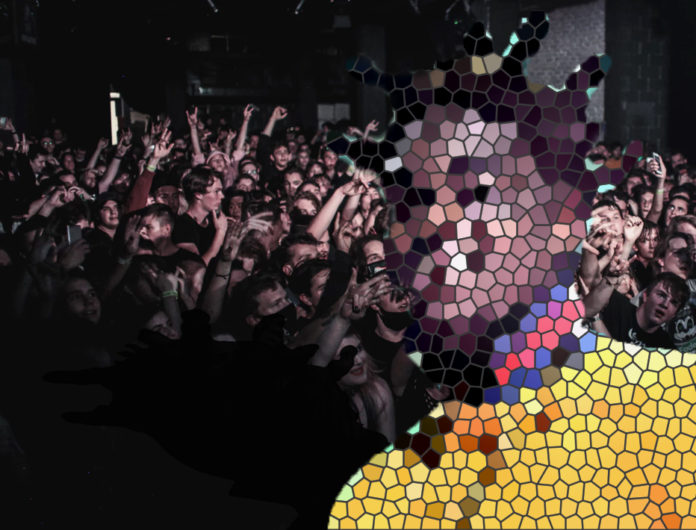I was scheduled to attend Florida rapper Kodak Black’s performance Feb. 8, 2018, at The Observatory in Santa Ana. After reviewing many contemporary talents, he remained an artist I had yet to see up close. Kodak’s influence has been intimately and commercially at the heart of the genre dating back to his double platinum single “No Flockin.” The song was later reprocessed after Cardi B proudly admitted she swiped his style and shamelessly reused VinnyxProd’s production on her shrill breakout hit “Bodak Yellow.” At 21 years old, his dense mixtape catalog clashes with his antic persona. The public listened as the self-proclaimed “project baby” aged from rebellious teenager into millionaire misfit. This persona was complicated by a cycle of legal troubles and prison stints. When he canceled his Observatory appearance, it was involuntary, as he was sentenced to a full year behind bars. Kodak Black was back in Los Angeles March 20, to perform his latest album, “Dying to Live.”
The Hollywood Palladium’s circular ballroom framed a digitized and spacious entertainment experience. From center stage, the lights beamed out toward the audience and converged to form the outline of a pyramid with an elevated DJ booth at its apex. When a black curtain fell, it revealed a marble stairway leading to a glass coffin held up by two stone bases with colorful flowers protruding on all sides. This structure remained as the only set piece on stage for the entire performance. To begin the performance, Kodak played dead in a crisp black and white suit as the DJ teased an exaggerated introduction to the track “Testimony.” The rapper awoke and sat forward to provoke screeching applause. This image was a visual representation of the artistic and personal idea etched into the fabric of “Living to Die.” Kodak legally changed his name from Dieuson Octave to Bill Kapri May 2, 2018, and in his latest prison stint, he worked with a rabbi to activate spiritual introspection. The emotional scars of his rough upbringing in Pompano Beach, Florida persist throughout his music, but this record communicates a serious urge to look toward the future. It is not about returning to a pre-fame state. He wants to reform into someone completely new, balancing the material wealth of his celebrity with youthful loyalty to the mores of his home.
Kodak’s name change reveals an identity crisis. By enlarging this conflict and translating it into religious terms, he helps us understand the scale of his ambivalence about ignorance and consciousness. The twang in his voice was toughened as he rapped, “He use me as his vessel, like He use me as an instrument. They locked me in a box, they hate how God just keep on blessin’ me. They locked me in a box, I pray to God this ain’t my destiny.” If a listener puts this song in conversation with his 2017 track “Time Never Mattered” and his 2014 ballad “Institution” it reveals an artist invested in expressing a consistent personal idiosyncrasy. On the former, Kodak rapped, “I can’t keep making the system richer, they keep taking time from me.” There is a duality in this language that pivots toward both responsibility and victimhood. He acknowledges the cyclical nature of his struggles and begins with an intention to remove himself from its course. A reference to wealth is perfectly squeezed between the two perspectives, and this position mimics its role as the arbiter in his access to temptation and his heightened juridical visibility. Time becomes a synonym for faith in a positive outcome.
Throughout his performance, Kodak underwent four pristine and calculated outfit changes. The black and white suit indicated a seriousness and professionalism that was both shocking and refreshing. He transitioned into a black turtleneck, then an oversized fur coat, before finishing with the all-white suit he donned on his album cover to signal a pure rebirth. While performing the record “Tunnel Vision,” a massive screen behind him displayed a continuous tunnel leading to a cross until a three-dimensional head appeared and spun above incendiary flames. After Lil Uzi Vert’s juvenile use of satanic symbols, one might assume Kodak is caught between the upside down cross’ traditional meaning of humility and its anarchistic relationship to sadism. However, his lived experience and its relationship to the context of this album makes a case for sincerity.
His demeanor was composed as he paced across the stage, embodying his raps with loose but controlled gestures and expressions. Despite all of these surprisingly thoughtful ideas, Kodak’s strongest technical achievement came through the recital of “Calling My Spirit” as he broke through the lazy and indefensible habit of rappers leaving their recorded vocals in their performance. He rapped without the background track and it startled then captivated the crowd. This may appear to be a minor feat, but it brought his respect for the traditional stylistic conventions of the genre into focus. Every contemporary rapper of his generation should follow the lead of this performance. Kodak’s artistic capabilities are more than that of a scamp. Putting purpose into the visual presentation of one’s ideas shows respect to the audience, it shows respect to imagination and it shows respect to art itself.
![]()




































